JUNE 2, 2024: This morning we headed back to the UK mainland from the Orkney Islands. Our reservation was for the 9:00 ferry, and we needed to be lined up at the Stromness ferry terminal by 8:00. The ferry terminal was only a short drive away from our campground and we made it by 7:50. Thinking that we had plenty of time (on the way here, they only started boarding 20 minutes before departure), we started to have breakfast in the motorhome while waiting in line. A few minutes later, a crew member knocked on our windshield to tell us it was time to drive onto the ferry. We quickly moved everything from the table – milk, granola, fruit salad, bowls – into the sink, so that we could drive without it toppling over. We were on the ferry by 8:10, finished our breakfast in the motorhome quickly and then went upstairs to the lounge.
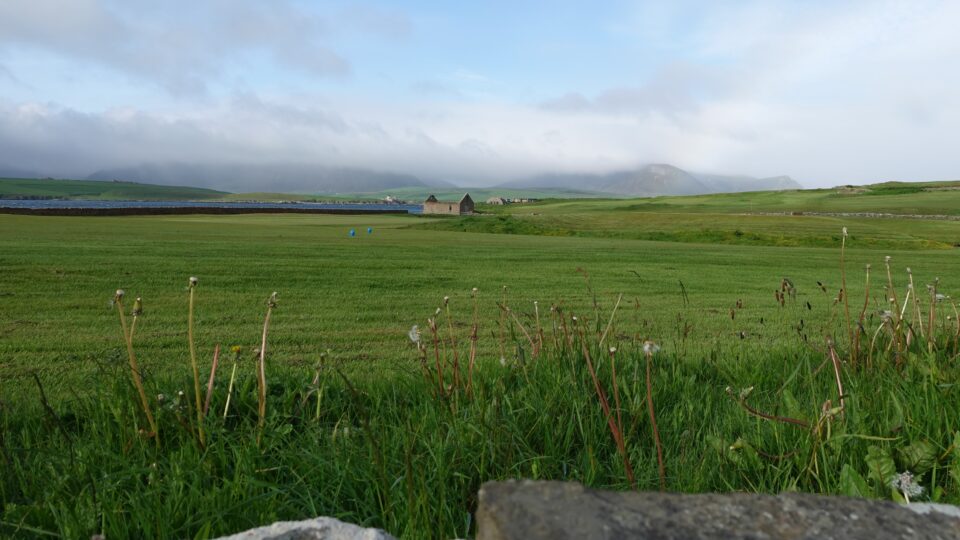
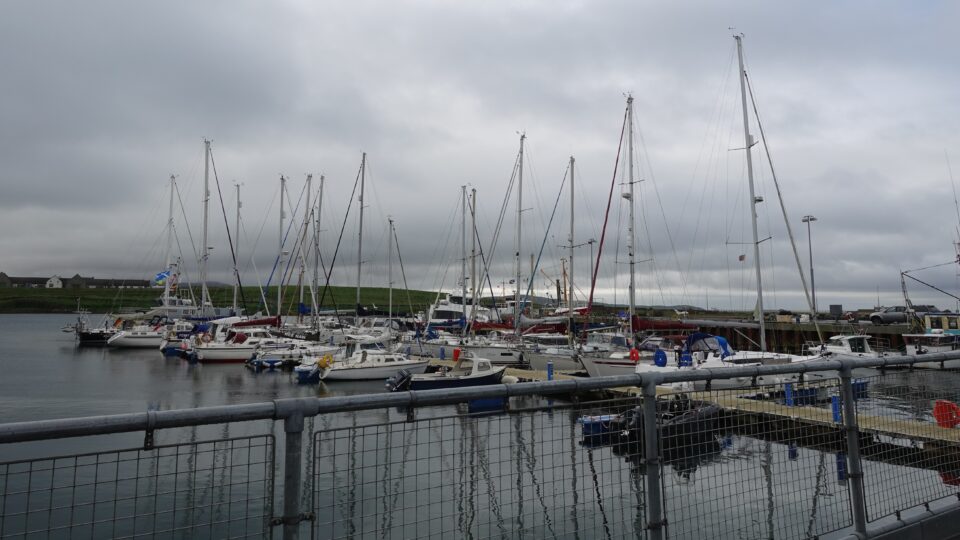
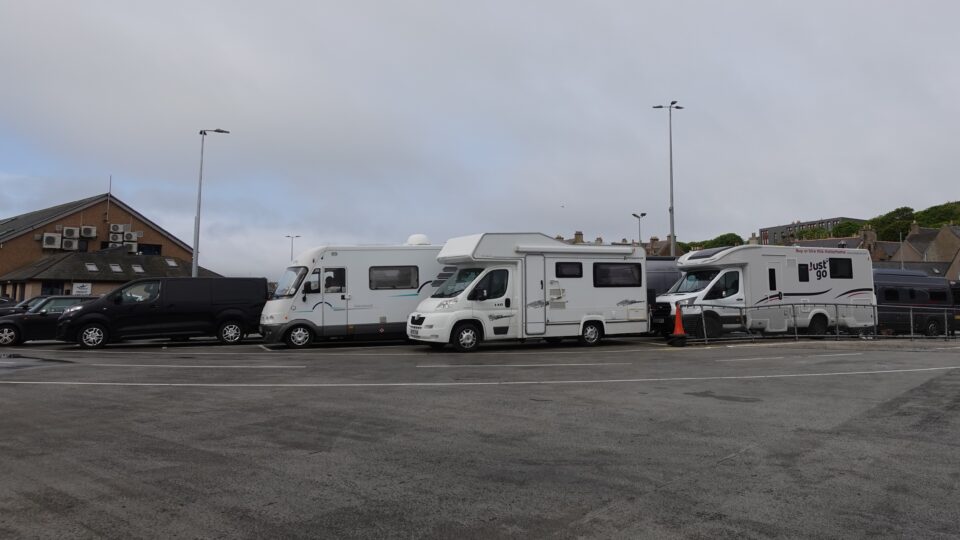
On the way to Orkney, the ferry was mostly empty. Now, maybe because it was a Sunday, it was full of people, including many families with children. When we departed Stromness, I went to the outside deck to take photos. On the deck was a group of passengers standing in a semi-circle, singing a song farewell to the island. Unfortunately, it was cold, windy and wet on deck and that did not last long.
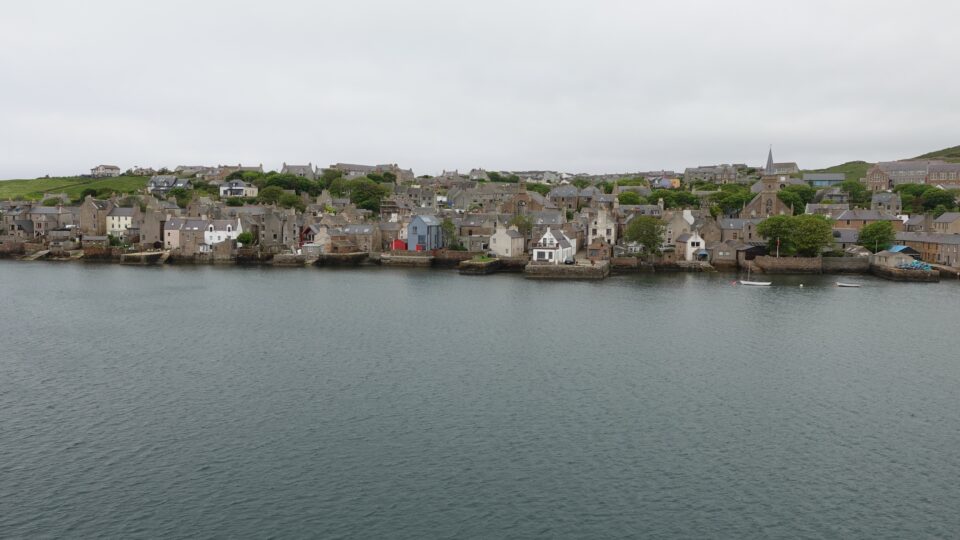

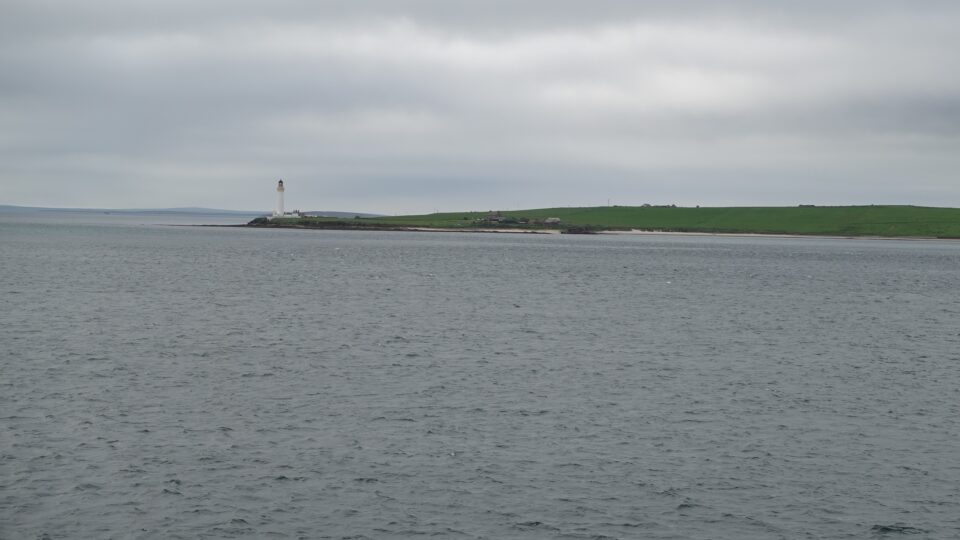
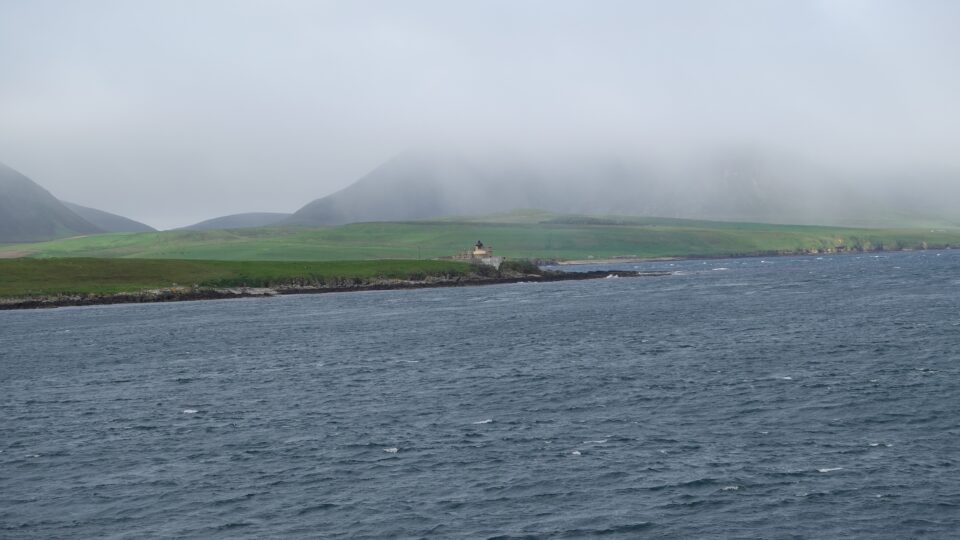
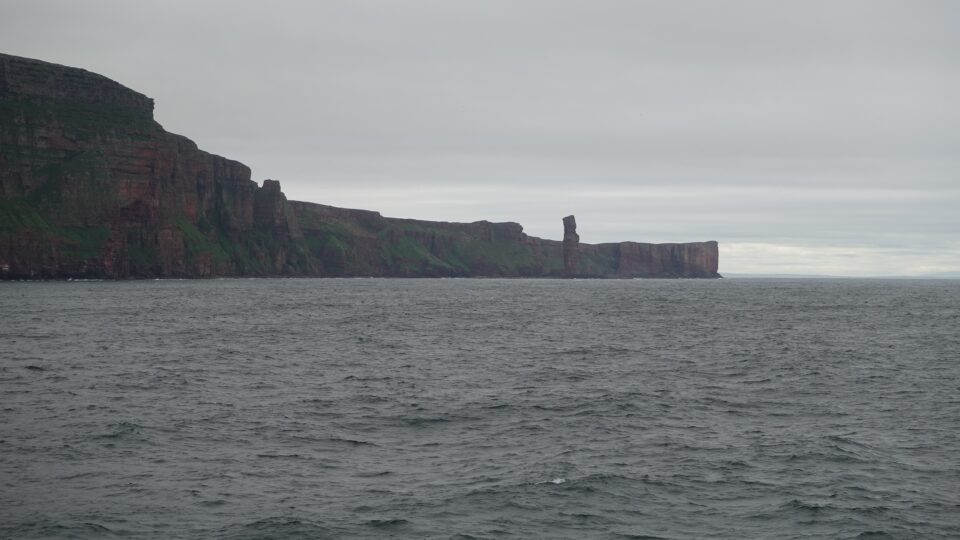
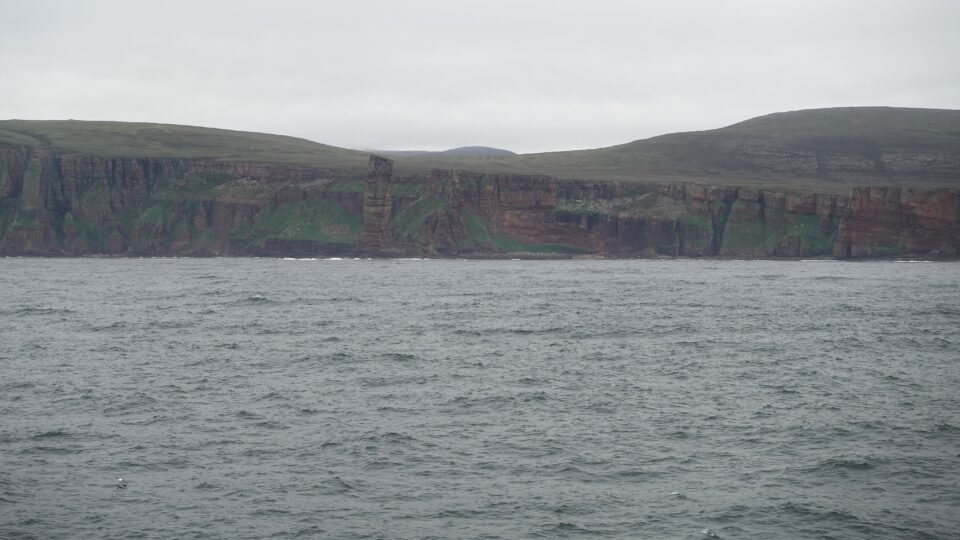

When we arrived back on the mainland, our plan for the day was to drive about 50 miles along the north coast of Scotland, continuing on the NC500. We needed to first fill up with gas. We had a little less than ½ a tank, and when researching for this trip, it often mentioned not to let your gas tank go below ½ full in the Highlands. Gas stations are few and far between and their hours are sporadic.
We started to drive, and I was, of course, nervous that we were doing exactly what was advised not to do – drive with less than 1/2 a tank. When we got off the ferry, we were only a few miles from a large town in the opposite direction and we should have gone there first to fill up. Mark tried to reassure me that we have enough gas to reach our campground tonight (it is in a village that has a gas station), but I was still worried. It did not help that the first gas station we came across after miles of driving had a sign NO FUEL. There was only one more gas station before the one near our campground, and that one would be closed by the time we reached it. Let’s say, I was not an easy passenger while driving today.
While driving, we saw a sign that said CROFT FOR SALE. My first inclination was that it was a craft sale, but that was very wrong. A croft in Scotland means a small area of agricultural land, usually enclosed by a wall or fence. It will usually, but not always, have a house on the land (the crofter’s dwelling). A crofter is the person who occupies and farms the croft. In rural Scotland, the crofter usually rents the land from the croft owner. The crofting system of landholding is unique to Scotland and is mostly prevalent in the Highlands and the Islands.
Our first stop along the north coast was the Strathy Point Lighthouse. To reach the path to the lighthouse, we needed, as usual, to drive down a narrow one lane road. At one point, traffic was stopped because there were cows on the road. Our first hairy coos! Highland cattle, better known as hairy coos, are a breed of cattle that originated in the Scottish Highlands. Hairy coos have long horns and a long shaggy coat. They are a hardy breed, able to withstand the harsh weather conditions in the region.
I mistakenly thought that most cows in Scotland would be hairy coos, but as we have been driving along, we have seen many, many cows, and none were hairy. Turns out that less that 1% of Scotland’s cows are hairy coos. The most common color, the classic color of hairy coos that is displayed on Scotland tourist calendars, is a golden brown. Only about 5% of hairy coos are black. Not only was this a hairy coo on the road, but a black hairy coo!
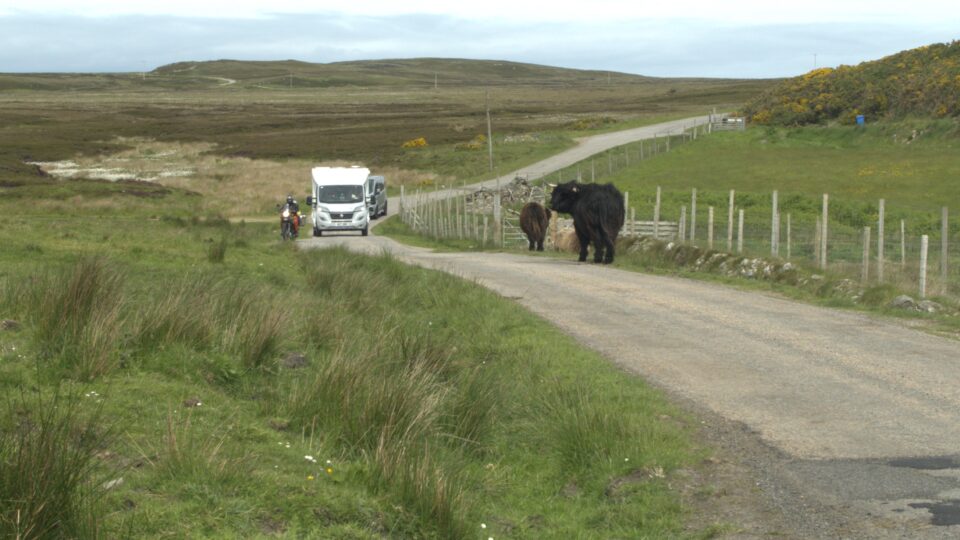
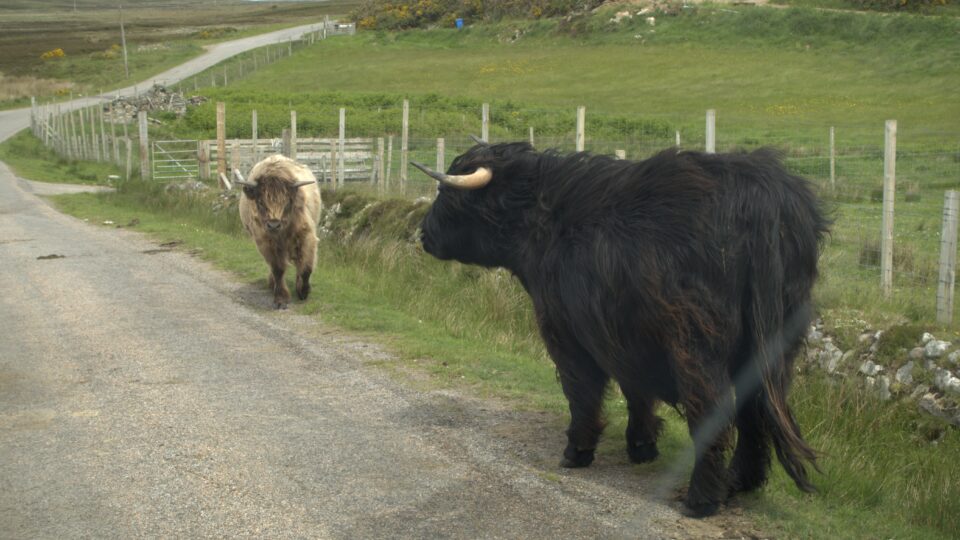
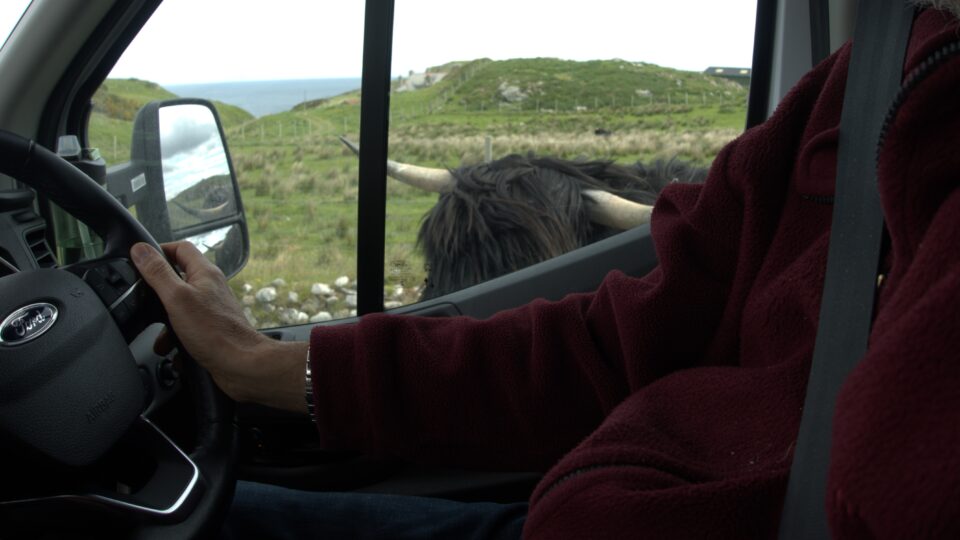
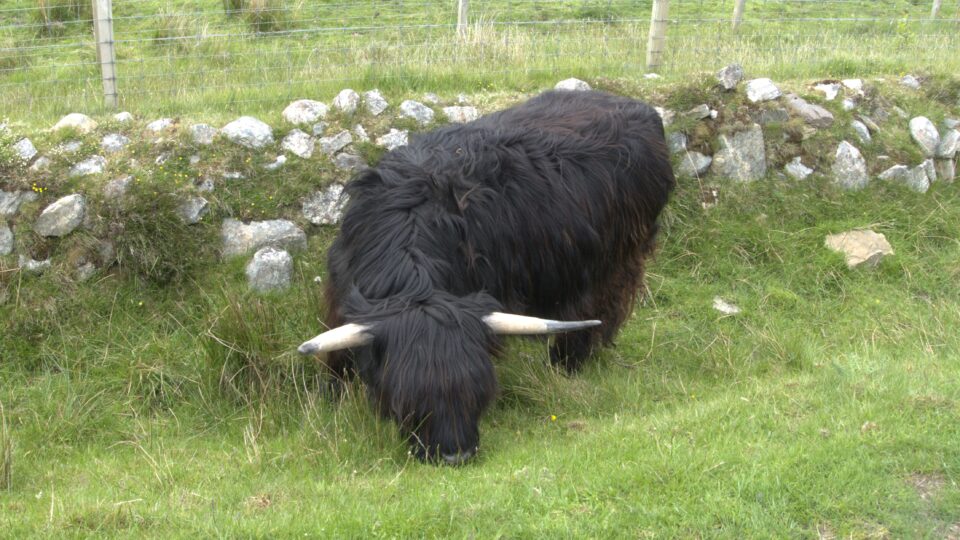
We finally arrived at the end of the road and found parking for the motorhome. To reach the lighthouse, we would need to hike over a kilometer, first passing a couple of houses.
In the yard of one of the houses, was a pile of peat. Peat is a soil with a high percentage of organic matter. You can burn it, the same way you burn wood – a stove designed for one will just as easily burn the other. Peat, however, is the most damaging fuel in terms of global warming, even worse than coal. In 2022 the sale of peat for burning was prohibited in the UK, but some people are still allowed to cut and burn it.
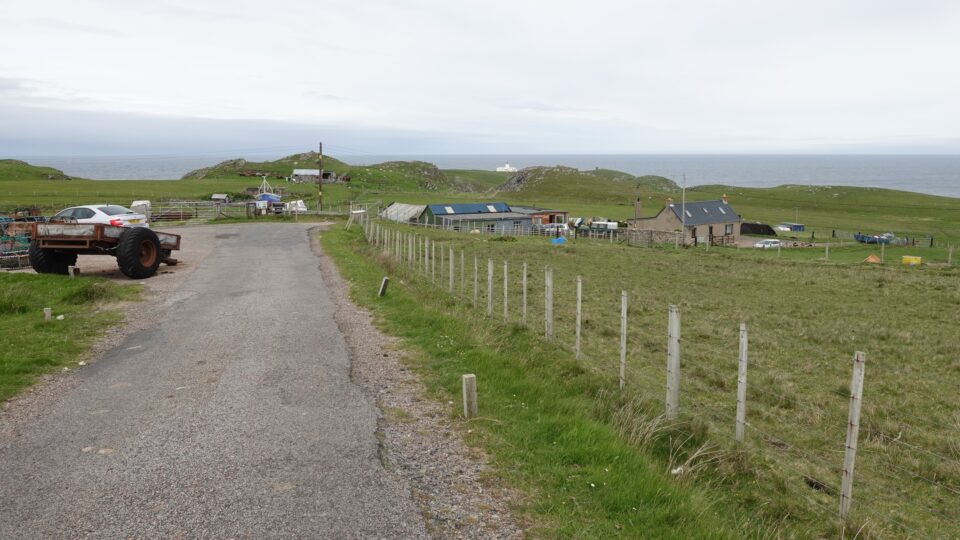
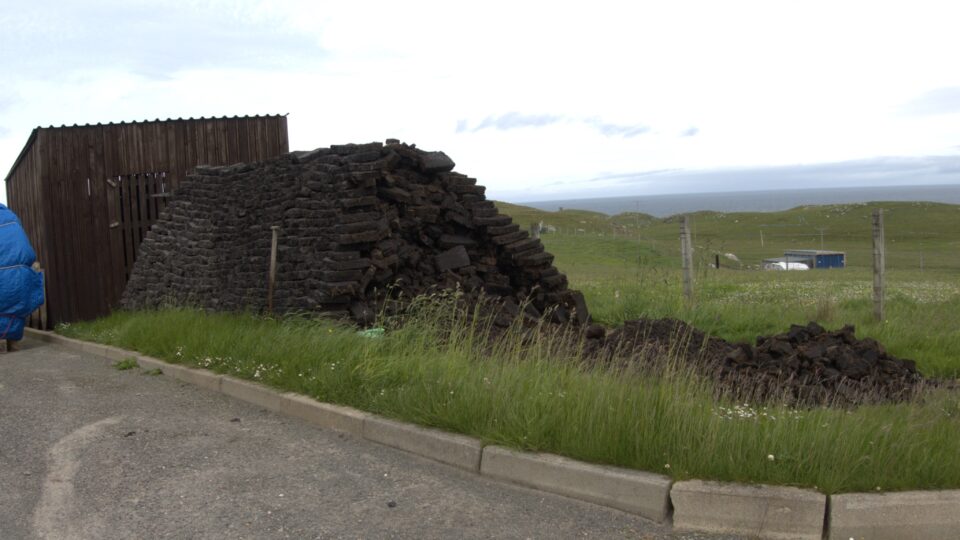
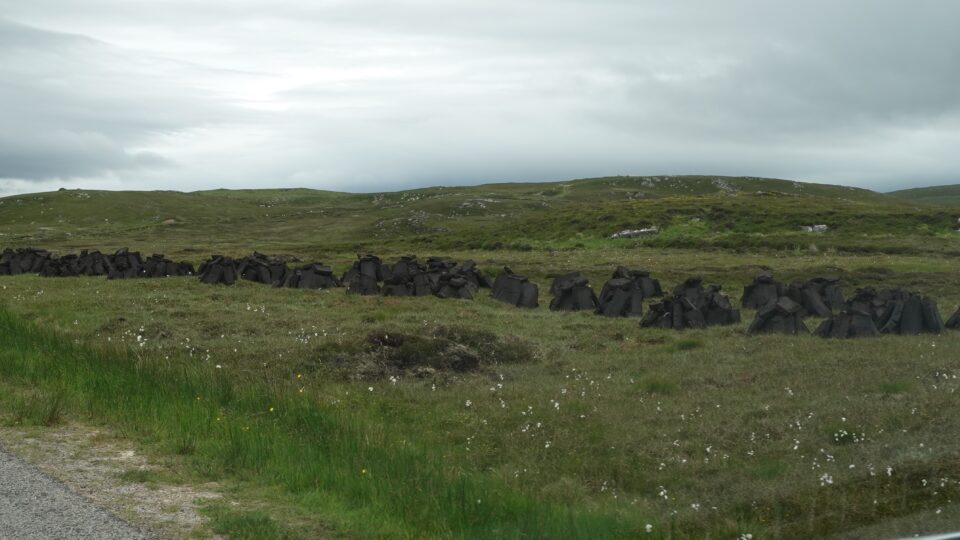
The lighthouse is located at the northernmost tip of Strathy Point, and we followed the track to reach it. This lighthouse is relatively modern, having started to operate in 1958. It was designed by Peter H. Hyslop (not of the Stevenson family) and it was the first all-electric lighthouse in Scotland. The station buildings are set out around a square courtyard with covered walkways to give some protection from the high winds on this exposed headland.
The lighthouse was manned until 1997 when it was automated and monitored remotely from the Northern Lighthouse Board headquarters in Edinburgh. Today, it is no longer operational, having been turned off in March 2012 and the buildings are now all in private ownership.
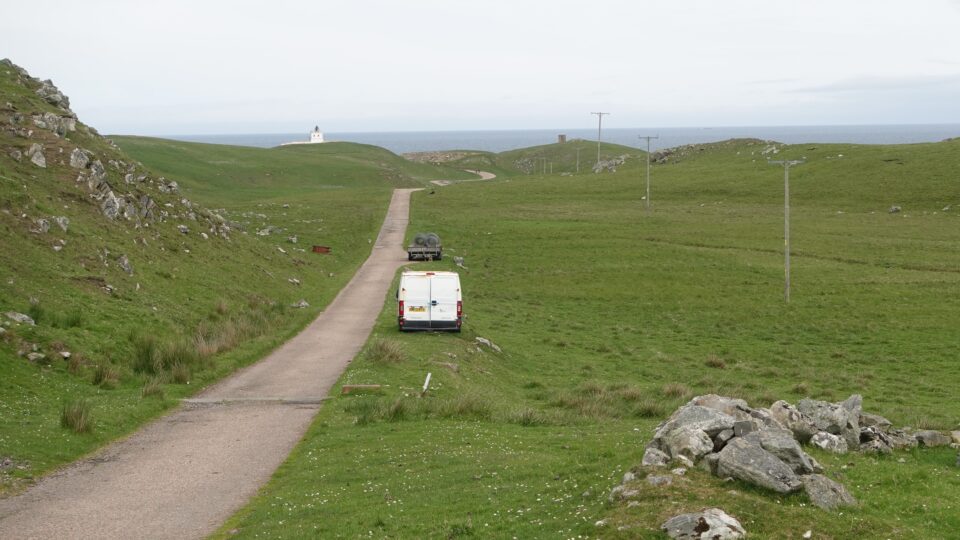
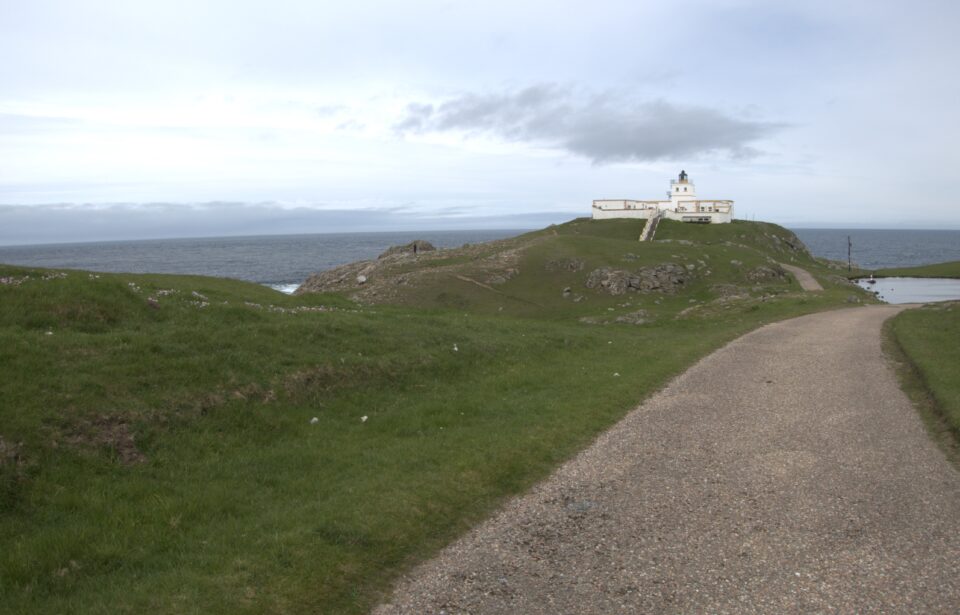
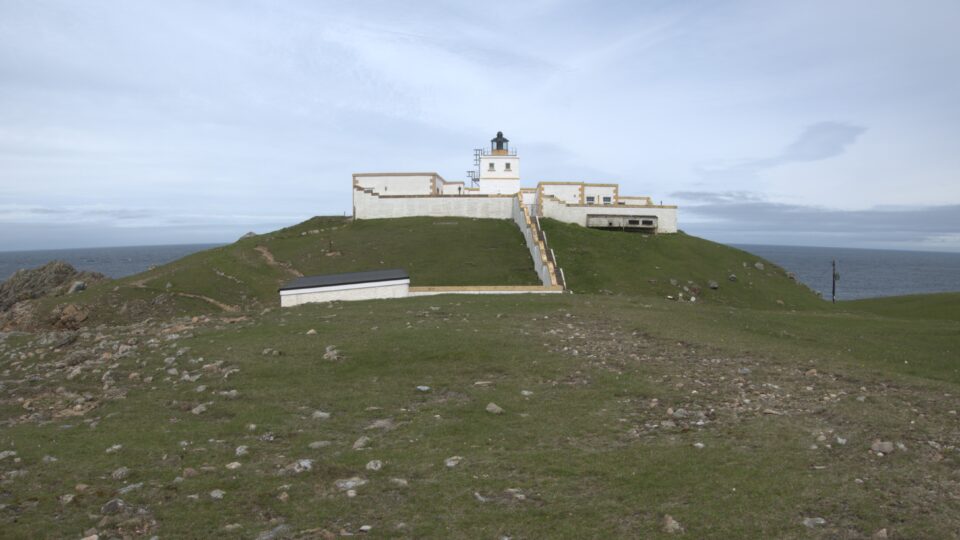
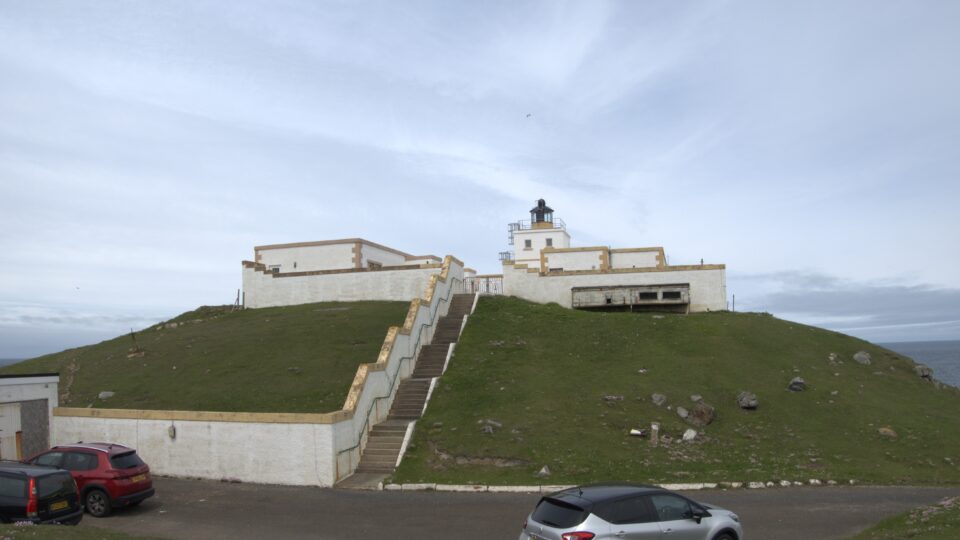
After reaching the lighthouse, we walked along the nearby cliffs. The view was spectacular. There was even a natural arch in the rocks.
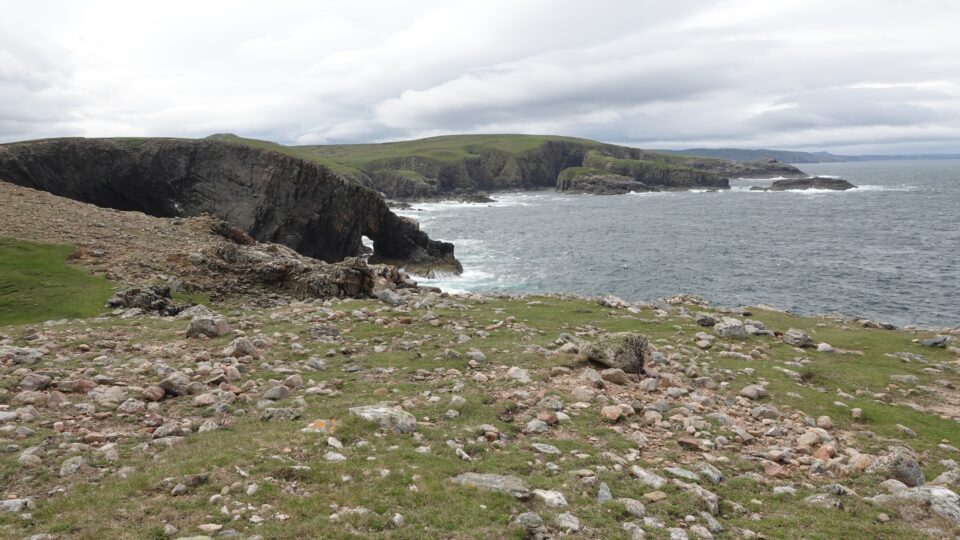
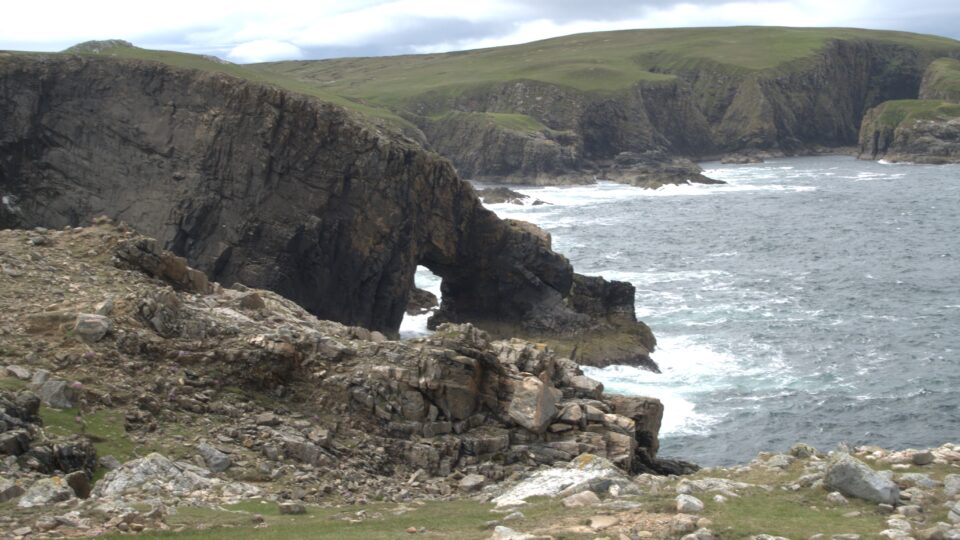
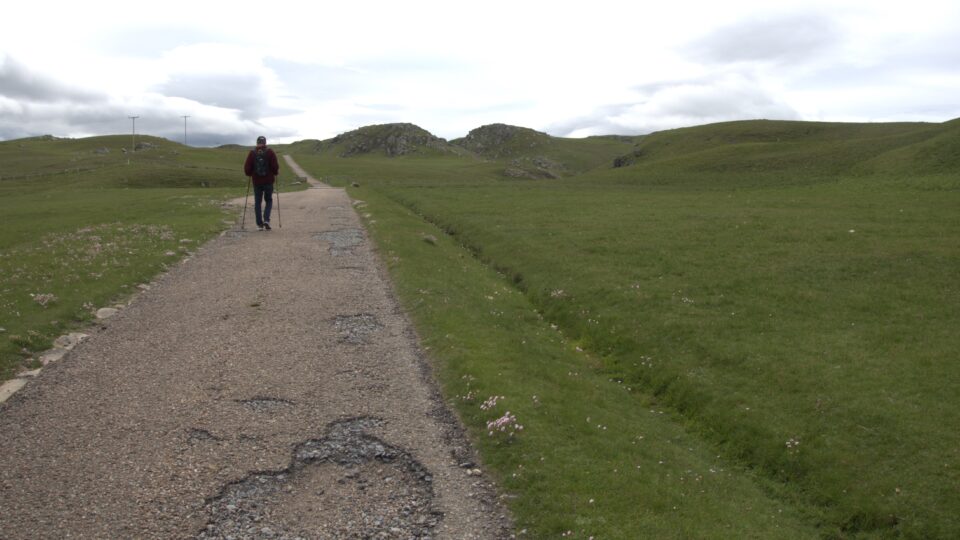
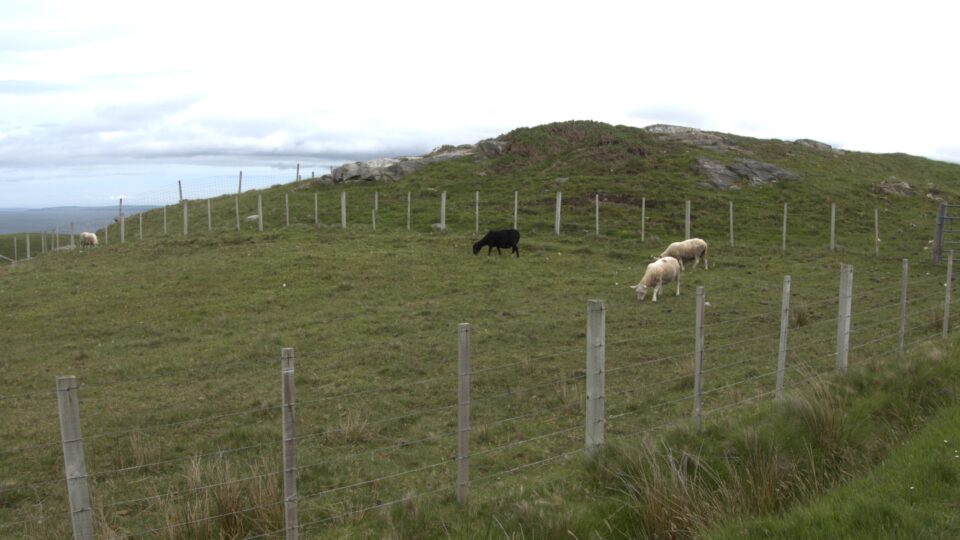
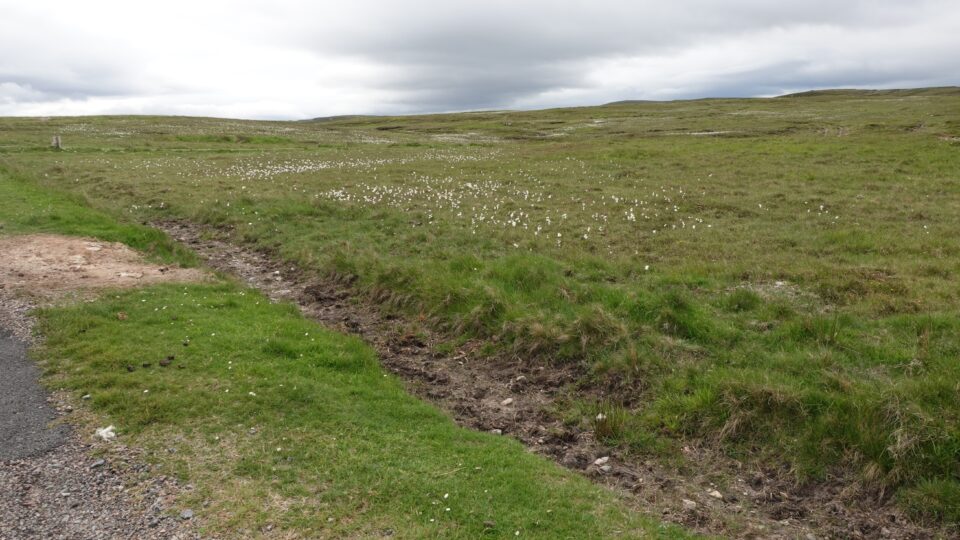
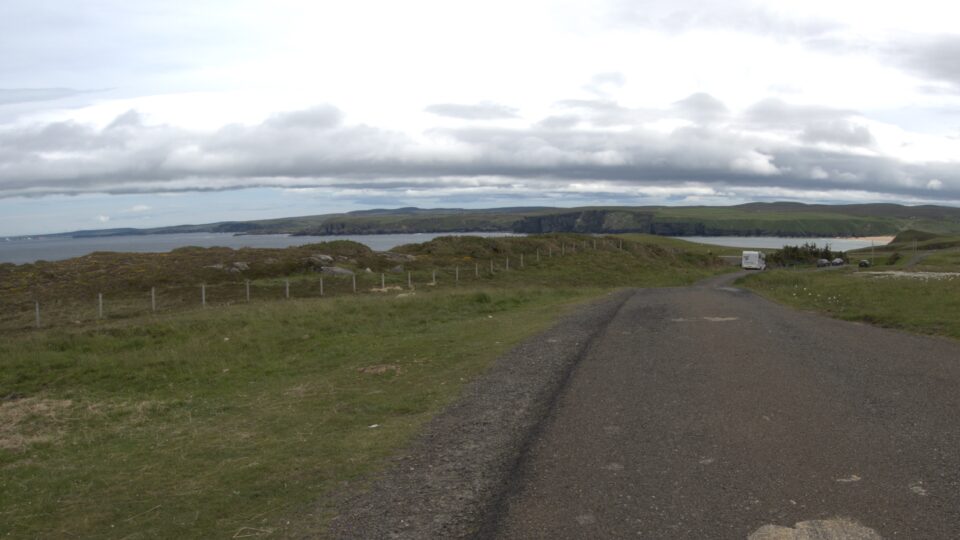
Our next destination was Farr beach, not too far away. As we drove, the scenery was changing. The mountains were much higher. The scenery became less green, more of a brown color. It was very desolate – you could see for miles and there were no trees, no houses. This was more of what I envisioned the highlands would look like. Even though we were driving on the main road of this area, it was often only one track.
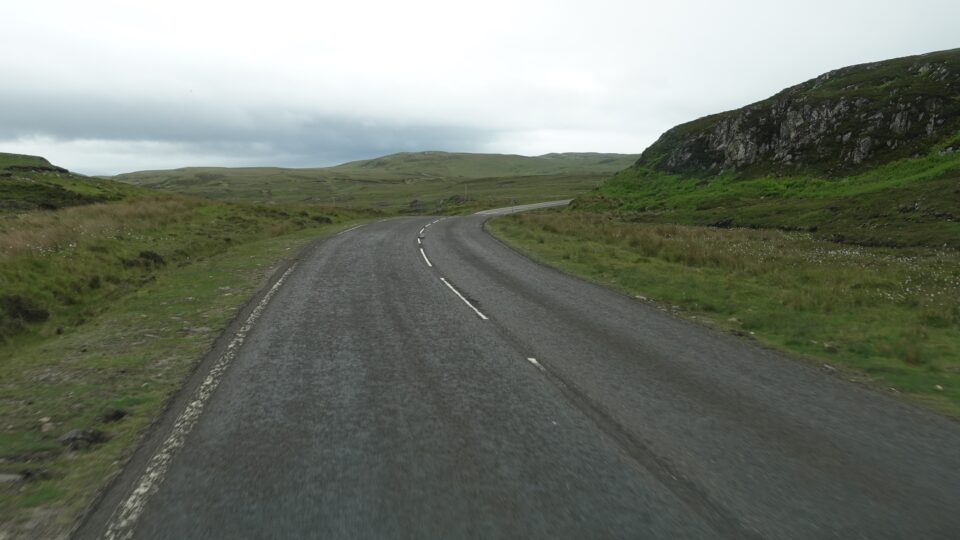

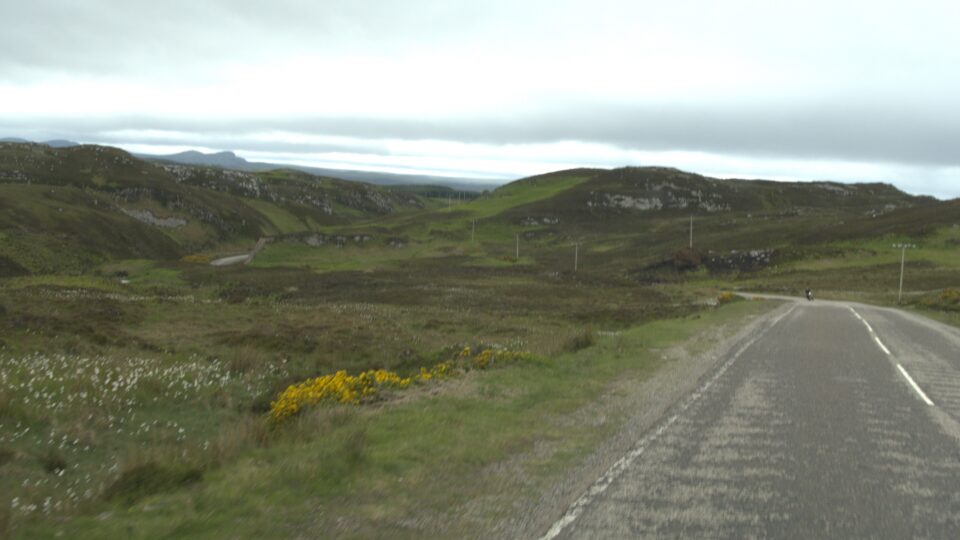
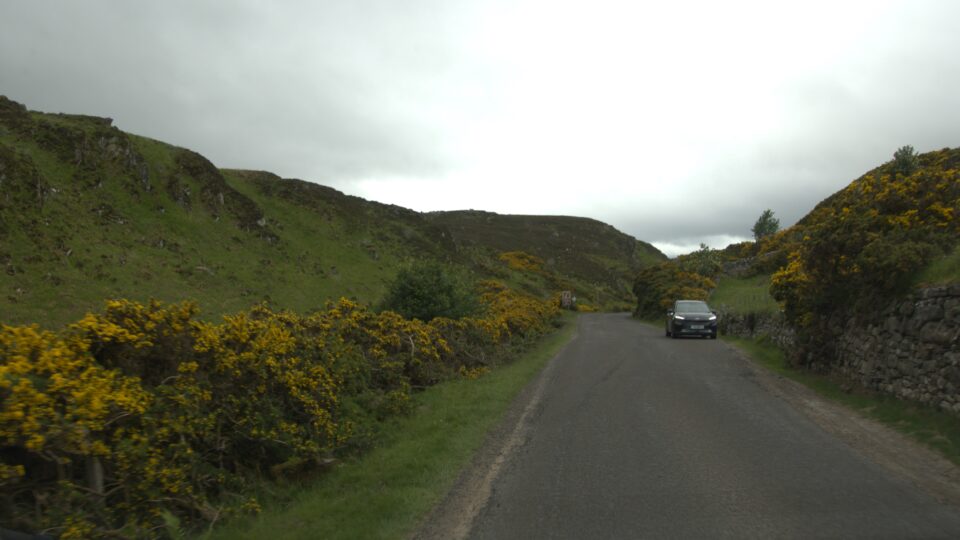
We reached the village of Farr. After lunch in the motorhome (very convenient), we walked to Farr Beach. This was a beautiful beach with a huge, pristine stretch of sand. Mark estimated that the undisturbed sand was around 100 by 400 meters long.

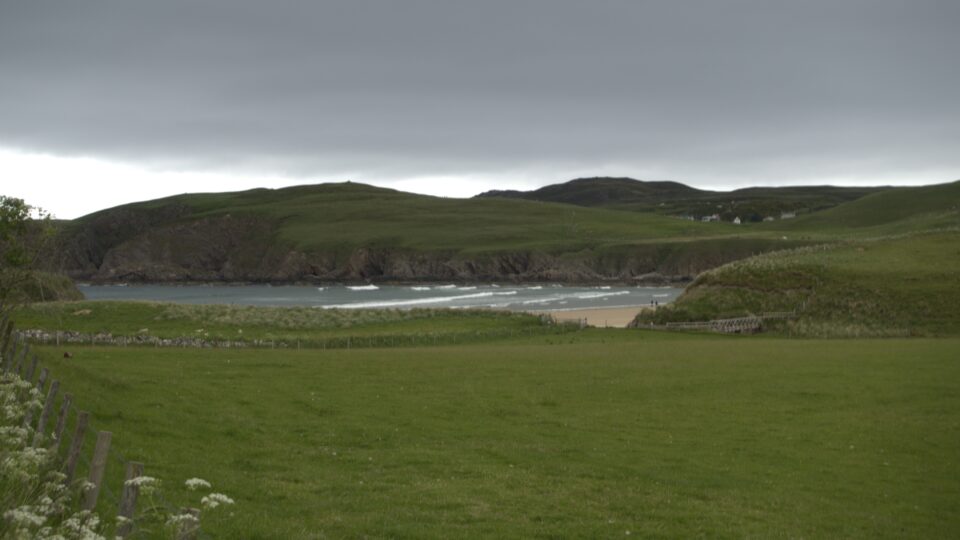
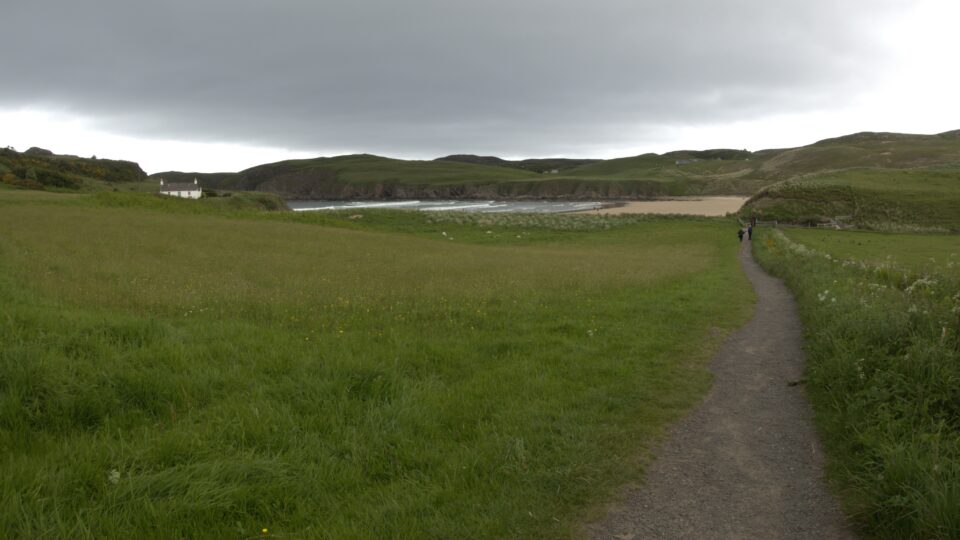
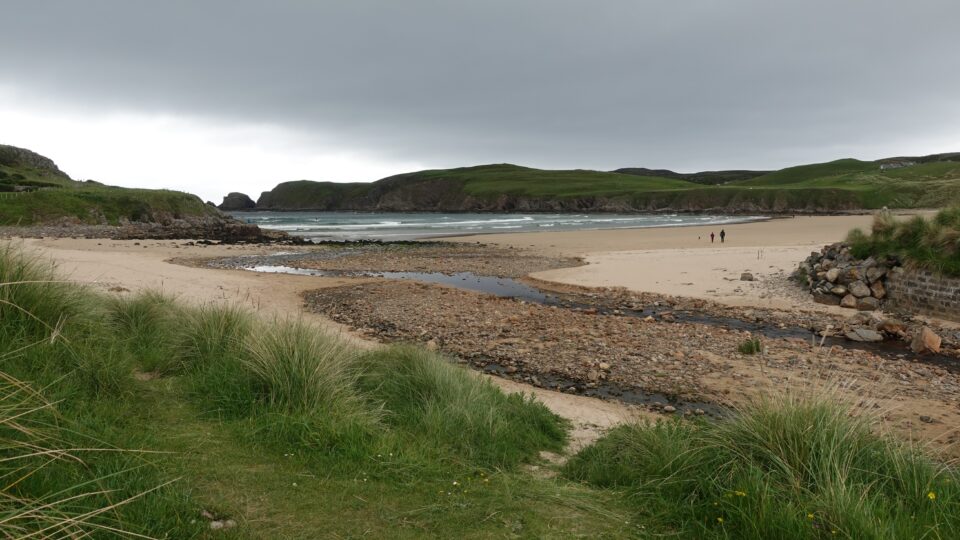

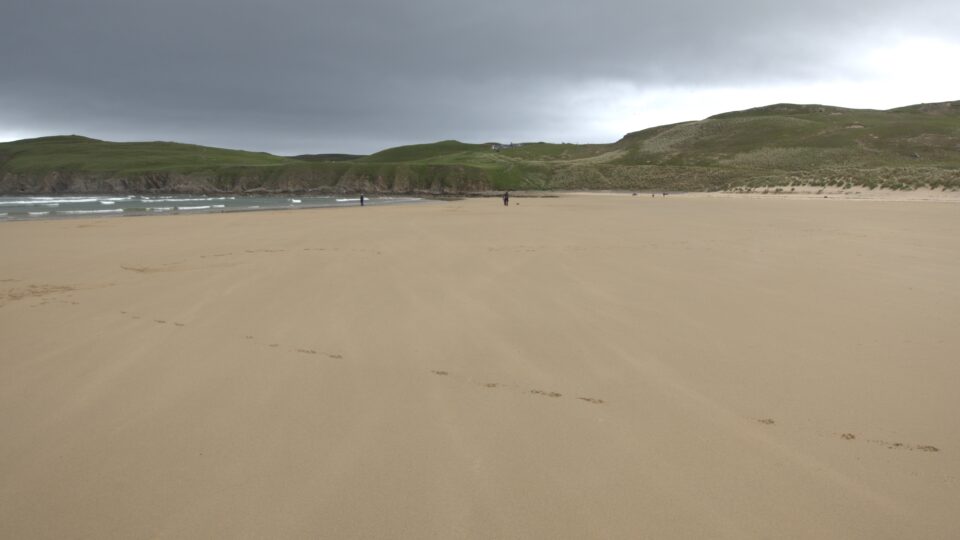
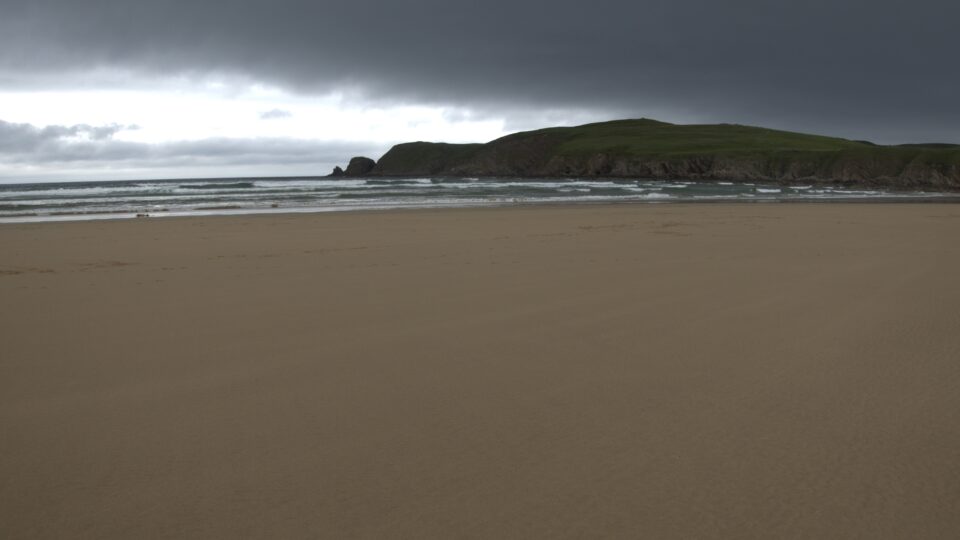
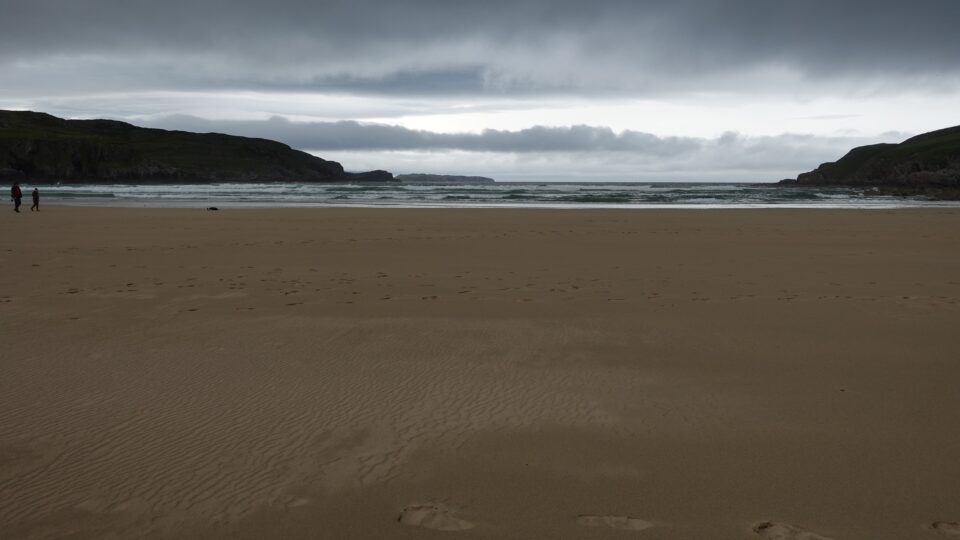
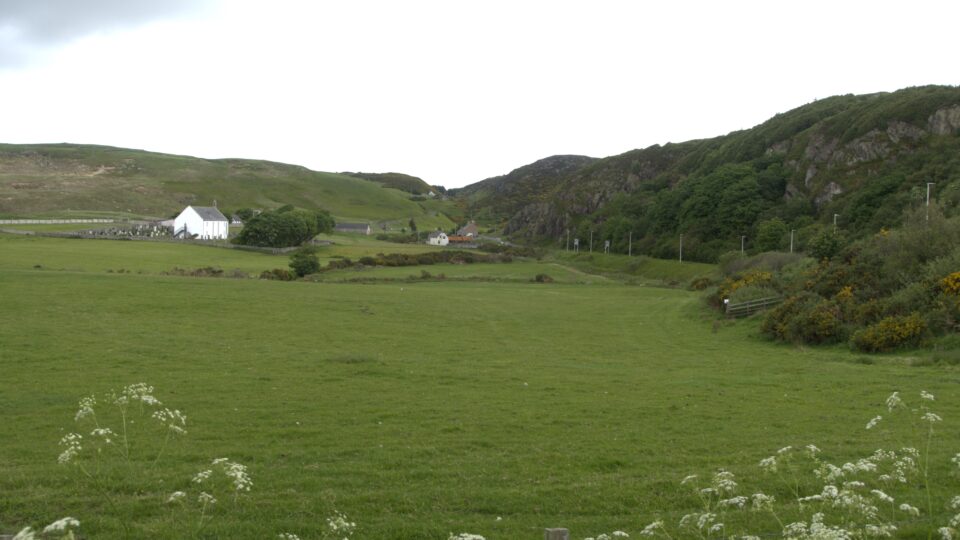
After the beach, we continued driving to the Kyle of Tongue, where we had campground reservations for the night. A kyle is a Scottish term referring to a narrow channel of water between two land masses. Like a bay, but narrower. The drive continued to be in beautiful scenery.
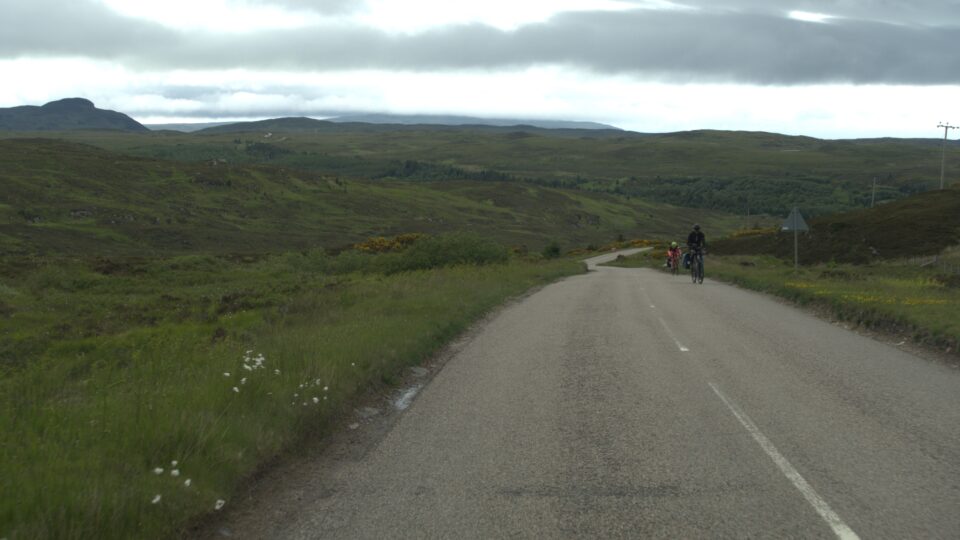
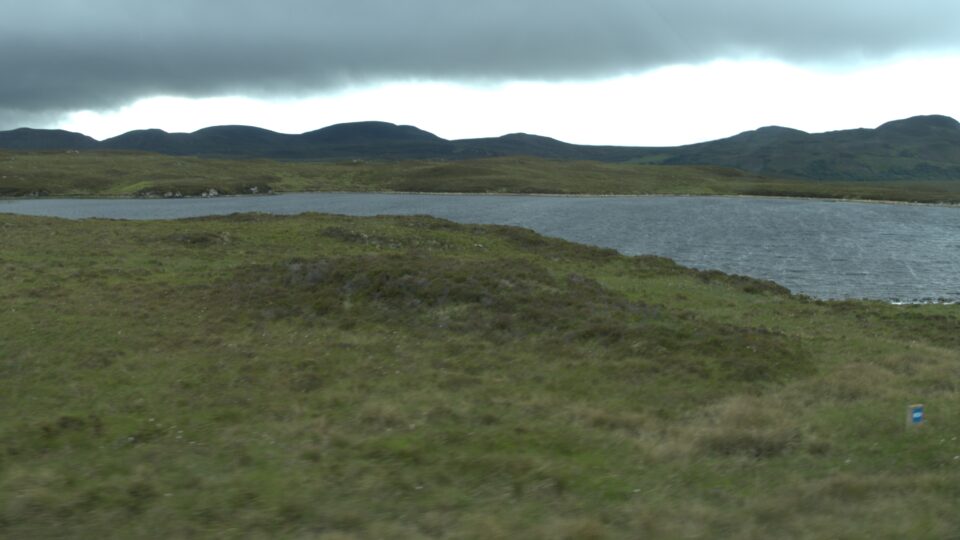
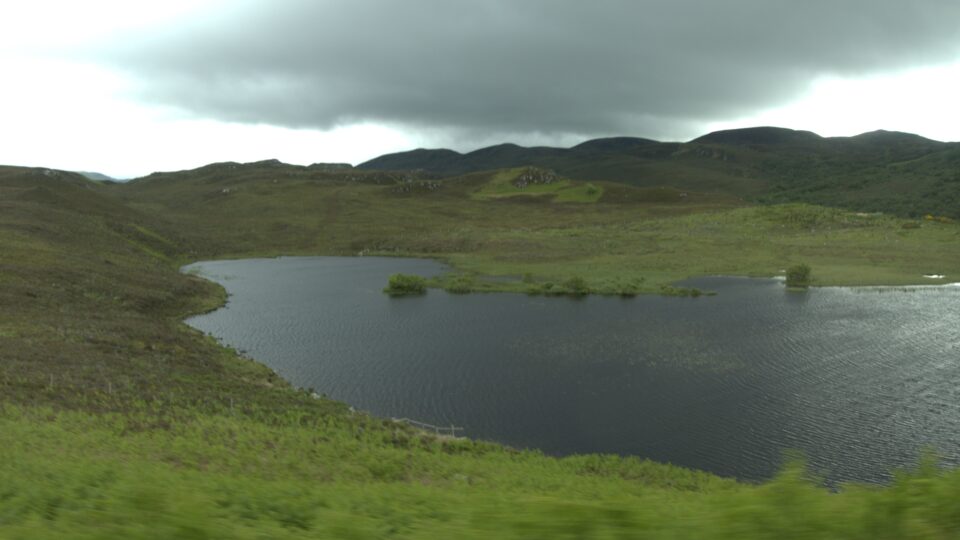
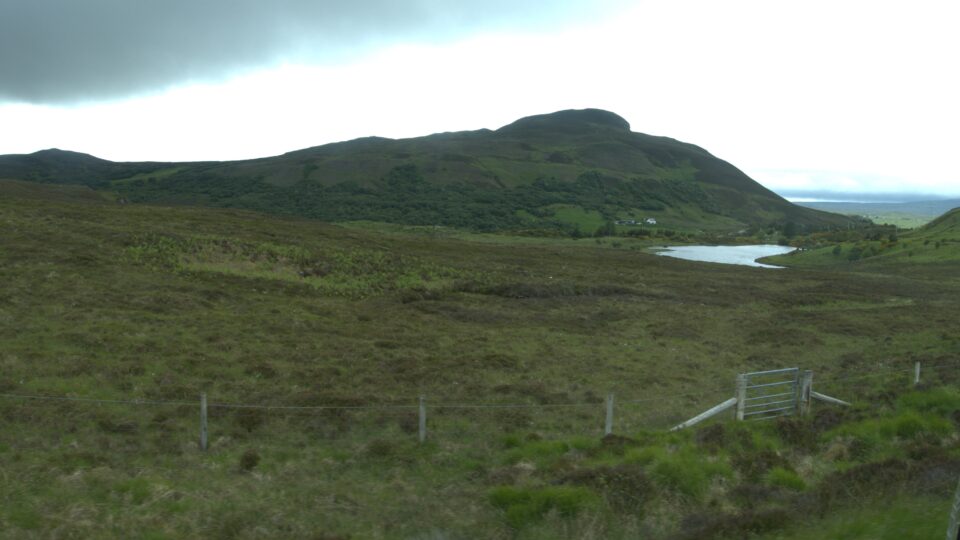
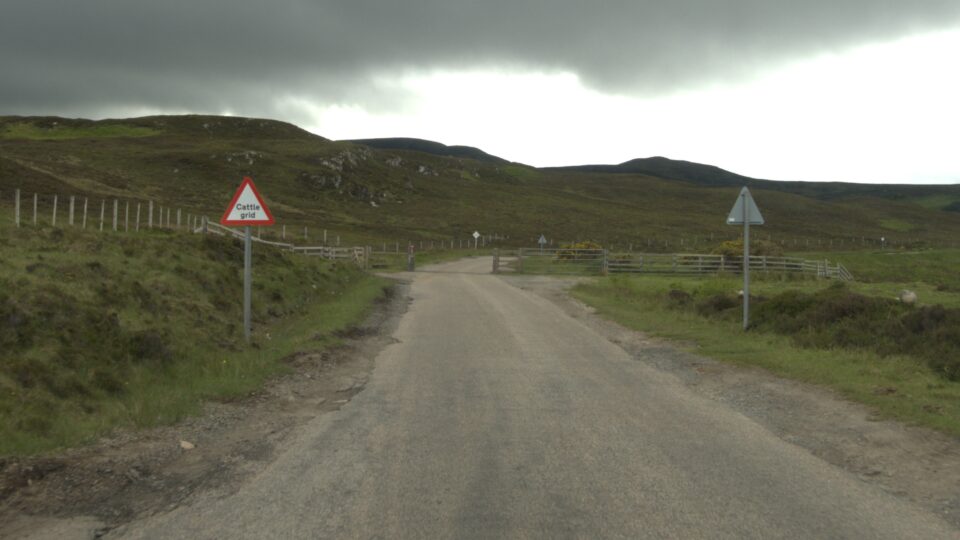
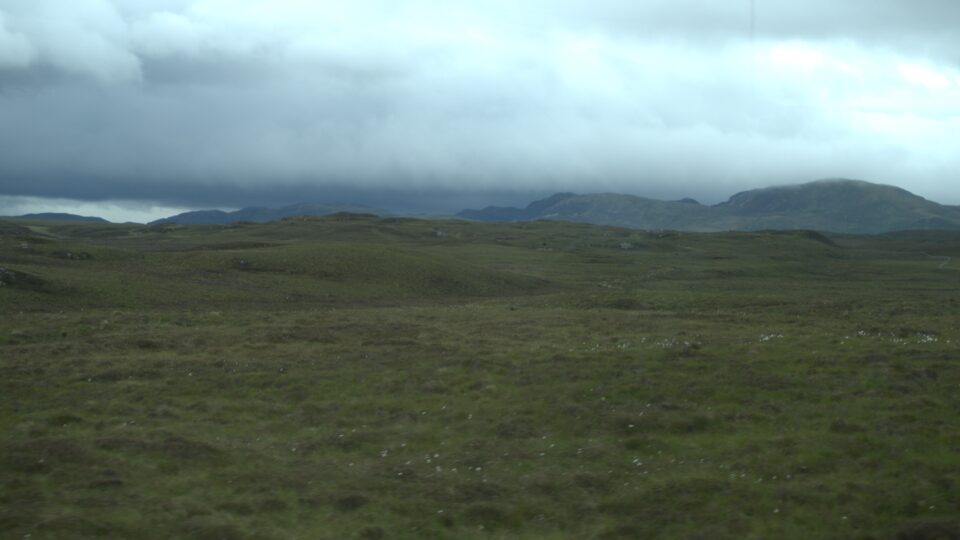
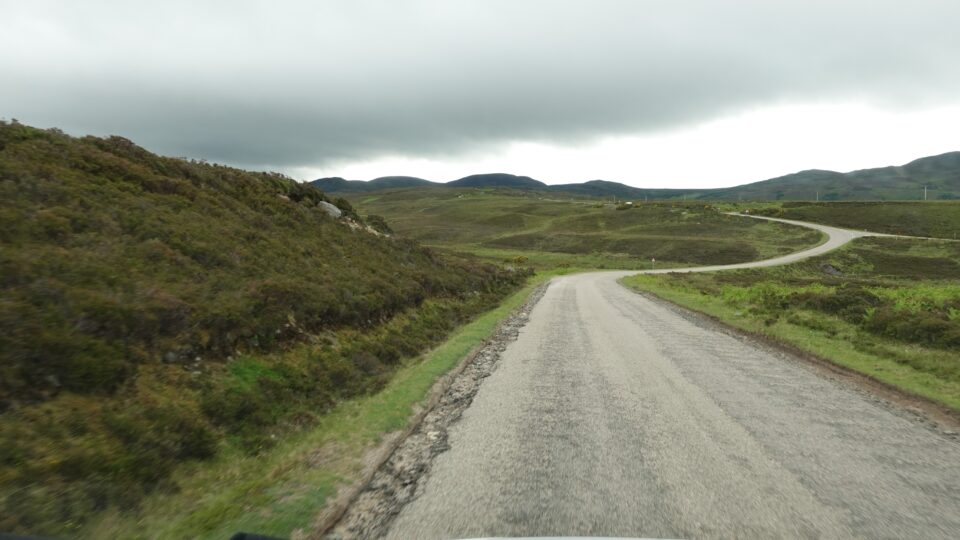
We reached Tongue and found the gas station – one pump in the middle of a construction zone. It was self-service that automatically charges your credit card. No serviceman needed and therefore available 24/7. We had had enough gas to reach Tongue and the pump here never closes. No need for all my worries.
Maybe tomorrow will be a worry-free day…
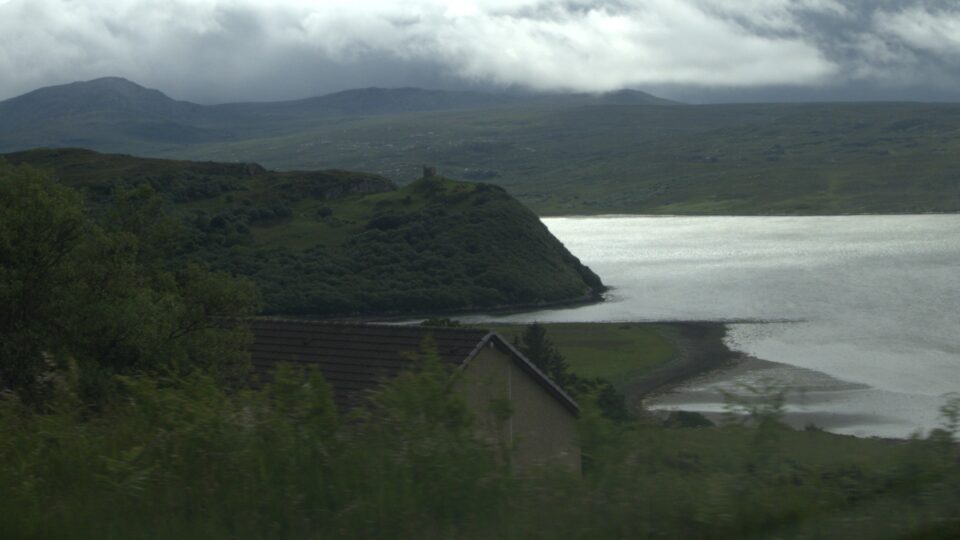
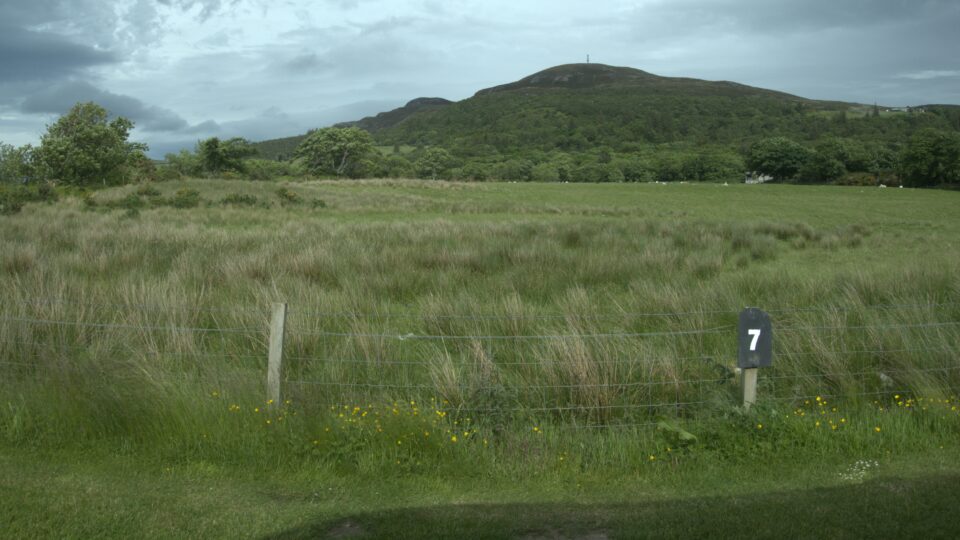
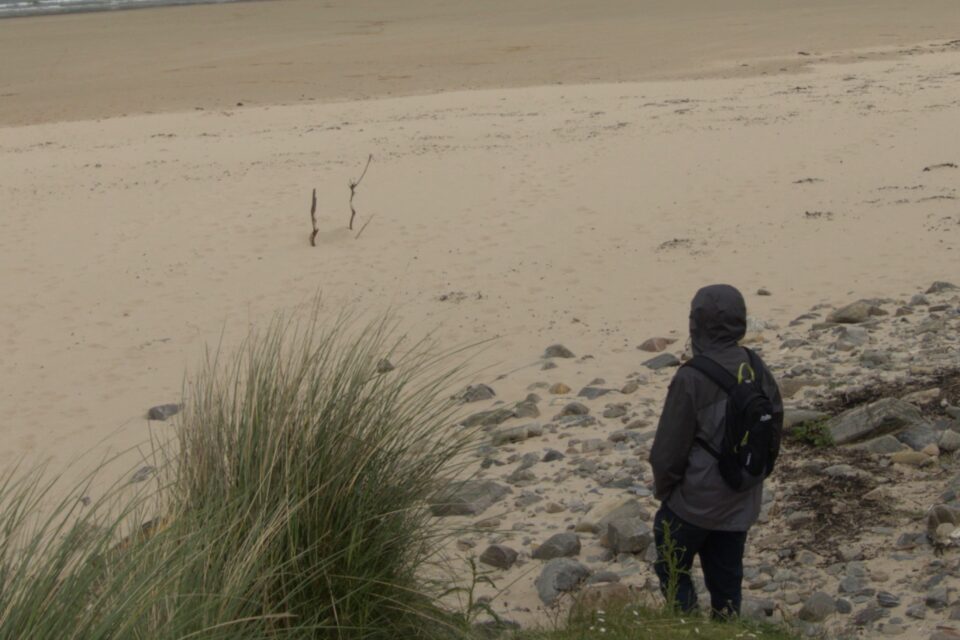
Beautiful !! But what happened with the fuel? Did you have enough to reach the campground?
So lucky to see a black coo!!